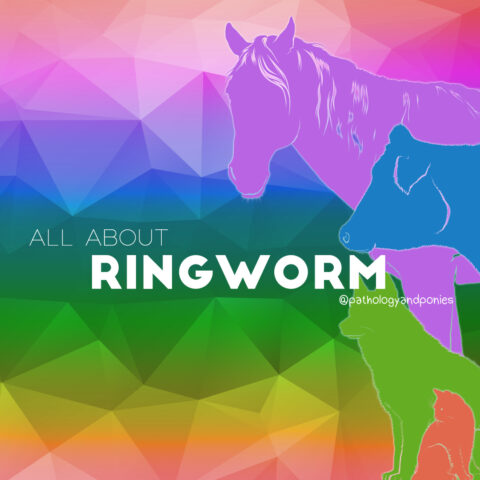Today’s path rounds are on 𝐜𝐫𝐲𝐩𝐭𝐨𝐫𝐜𝐡𝐢𝐝𝐢𝐬𝐦!
𝐖𝐡𝐚𝐭 𝐢𝐬 𝐢𝐭?
𝐂𝐫𝐲𝐩𝐭𝐨𝐫𝐜𝐡𝐢𝐝𝐢𝐬𝐦 is the most common disorder of sexual development in male animals. During development, the testicles are located near the kidneys, and as the animal develops, they are pulled downwards into the scrotum, their normal home. In cryptorchidism, one or both of the testicles doesn’t reach its final destination, and ends up somewhere in the abdomen!
𝐖𝐡𝐨 𝐠𝐞𝐭𝐬 𝐢𝐭?
Any species can get this!
𝐖𝐡𝐚𝐭 𝐜𝐚𝐮𝐬𝐞𝐬 𝐢𝐭?
The descent of the testicles is actually very complex, and involves a lot of genes, hormones, and structural development. So an abnormality in any of these aspects, or even some environmental factors, can lead to development of cryptorchidism. That said, a hereditary component has been established in pretty much every species, and is believed to be the most common cause of this disorder. Therefore, cryptorchid animals should not be bred, to hopefully prevent future cryptorchids!
𝐖𝐡𝐲 𝐢𝐬 𝐭𝐡𝐢𝐬 𝐚 𝐩𝐫𝐨𝐛𝐥𝐞𝐦?
Generally it isn’t a huge issue having a testicle in the abdomen. However, it does predispose the animal to some potentially serious conditions! Cryptorchid testicles have an increased risk of developing tumours, particularly in dogs. They are also at a greater risk of 𝐭𝐞𝐬𝐭𝐢𝐜𝐮𝐥𝐚𝐫 𝐭𝐨𝐫𝐬𝐢𝐨𝐧 (twisting of the spermatic cord compromising blood flow) which can cause 𝐧𝐞𝐜𝐫𝐨𝐬𝐢𝐬 (cell death) of the testicle and be a source of pretty serious inflammation!
Interestingly, cryptorchid testicles do not produce sperm! This is because the cells that complete 𝐬𝐩𝐞𝐫𝐦𝐚𝐭𝐨𝐠𝐞𝐧𝐞𝐬𝐢𝐬 (sperm production) are very temperature sensitive, and the abdomen is just too warm for them to complete their normal functions. Cool!
𝐇𝐨𝐰 𝐢𝐬 𝐢𝐭 𝐝𝐢𝐚𝐠𝐧𝐨𝐬𝐞𝐝?
This is usually pretty easy to diagnose: simply palpate the scrotum to see if you can feel two testicles! If you can’t, then there’s a good chance that the animal is a cryptorchid. A word of warning however: some animal species are not born with their testes descended, so if you are dealing with one of those species, make sure the animal is an appropriate age before you diagnose it as a cryptorchid!
𝐇𝐨𝐰 𝐢𝐬 𝐢𝐭 𝐭𝐫𝐞𝐚𝐭𝐞𝐝?
As mentioned before, these animals should not breed, so cryptorchidism is usually “treated” by 𝐜𝐚𝐬𝐭𝐫𝐚𝐭𝐢𝐨𝐧 (removal of the testicles). However, castrating a cryptorchid is a bit more complex than castrating normal animals, since you often have to open the abdomen to go searching for the missing testicle! Therefore, these castrations are usually a pretty intensive surgery, particularly for our large animal species like cattle and horses.
𝐏𝐡𝐨𝐭𝐨𝐬
1-2) A normal sized testicle next to a cryptorchid testicle. Cryptorchid testicles are small because they aren’t able to develop properly in the high temperature of the abdomen!
3-5) Examples of intra-abdominal cryptorchid testicles! Note that they can be found very close to the kidneys.
𝐒𝐨𝐮𝐫𝐜𝐞𝐬
Maxie, G. Jubb, Kennedy and Palmer’s Pathology of Domestic Animals, Volume 3. Sixth Edition.
Photos 1-2 © University of Calgary Diagnostic Services Unit.
Photos 3-5 © Noah’s Arkive contributors Crowell, Niyo, Loukopoulos licensed under CC BY-SA 4.0.









